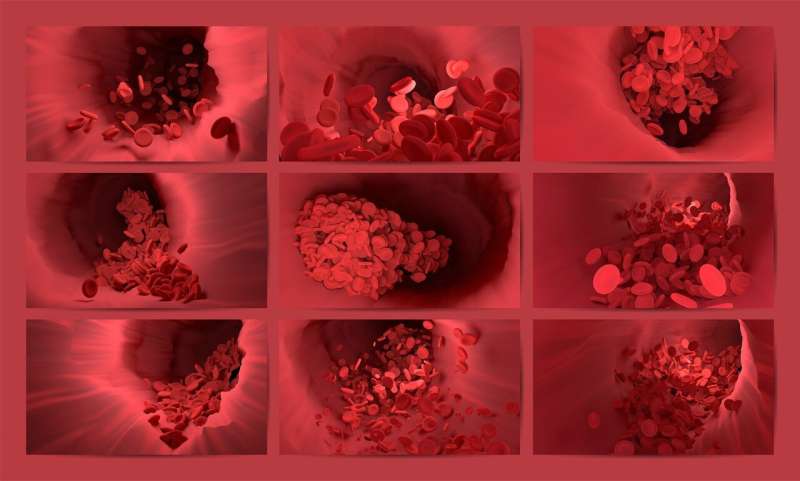This article has been reviewed according to Science X's editorial process and policies. Editors have highlighted the following attributes while ensuring the content's credibility:
fact-checked
peer-reviewed publication
trusted source
proofread
Team delivers breakthrough 'nanobody' technology

Researchers led by Professor Steve Watson and Dr. Eleyna Martin from the Institute of Cardiovascular Sciences at the University of Birmingham have delivered a breakthrough for thrombosis researchers, by producing the first binding molecules (ligands) of defined composition to make platelets clump together in a predictable way.
The research team developed antibody fragments called nanobodies and crosslinked these to make ligands to four platelet receptors (GPVI, CLEC-2, FcɣRIIA and PEAR1).
The nanobodies can be used to develop validated clinical assays for testing patients with platelet disorders such as bleeding or thrombosis, and as research tools to study platelet activation.
Professor Watson said, "Nanobodies have the same properties as antibodies but have several inherent advantages for platelet researchers. They are smaller, which makes them more suitable for cross-linking, and this size, coupled with their stability and high affinity for platelet receptors, makes them ideal reagents for receptor imaging."
Scientists already know that when these four receptors cluster on the platelet surface, signaling molecules are generated that trigger platelet activation and clotting.
However, they currently have a limited understanding of the relationship between cluster size, signal generation and how this relates to platelet activation.
Further research in this area is hampered due to limitations of the currently used ligands. Some have undefined valency (binding power), while others, such as the snake venom toxin rhodocytin, show significant batch variation, or uncertain specificity for the receptors.
The Birmingham researchers developed nanobodies with one, two, three and four binding sites, and tested the ability of these to generate signaling molecules and stimulate platelet activation. Their work is published in the Journal of Thrombosis and Haemostasis.
The versatility of nanobodies in biological research has already been illustrated in two earlier papers from the Birmingham Platelet Group.
In these studies, Professor Steve Watson and Dr. Natalie Poulter used novel nanobodies the team had raised to bind to the GPVI receptor. Present on platelet membranes, this receptor is an attractive target for drug therapies as it plays a critical role in thrombosis (clot formation) but only has minor involvement in haemostasis (which stops bleeding from a blood vessel).
In the first study, the researchers used a nanobody called Nb28, which they labeled with a fluorescent dye, enabling, for the first time, the visualization of GPVI receptors clustering on platelets in flowing blood. In the same study, they showed that a nanobody called Nb2, which has high binding affinity for GPVI, can potently inhibit platelet activation, block thrombus formation—making it potentially suitable for development into an anti-thrombotic agent.
In the second study, the same researchers demonstrated that there is a relationship between cluster formation and thrombus size, and that cluster size is related to thrombus formation, with the formation of GPVI 'macroclusters' supporting the formation of significantly bigger aggregates of platelets.
Professor Watson added, "We are entering an exciting period in thrombosis research. Reagents based on nanobodies will increase our understanding of platelet activation in the laboratory. Although nanobodies have a short half-life in vivo, this could be counteracted by linkage to larger inert molecules and yield novel therapeutics for blood and thrombotic disorders."
More information: Eleyna M. Martin et al, Trivalent nanobody-based ligands mediate powerful activation of GPVI, CLEC-2 and PEAR1 in human platelets whereas FcγRIIA requires a tetravalent ligand, Journal of Thrombosis and Haemostasis (2023). DOI: 10.1016/j.jtha.2023.09.026




















